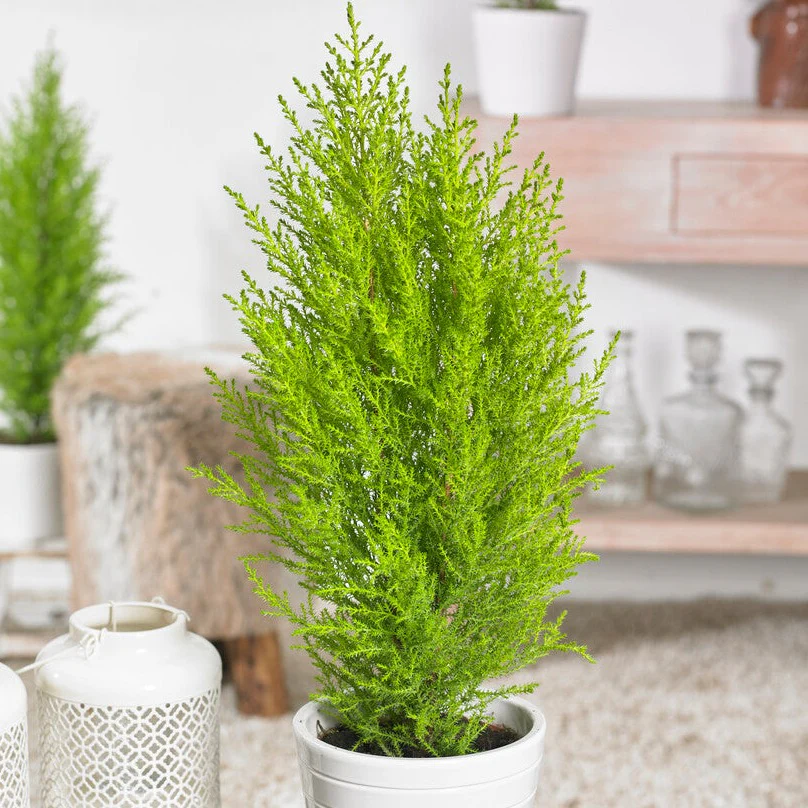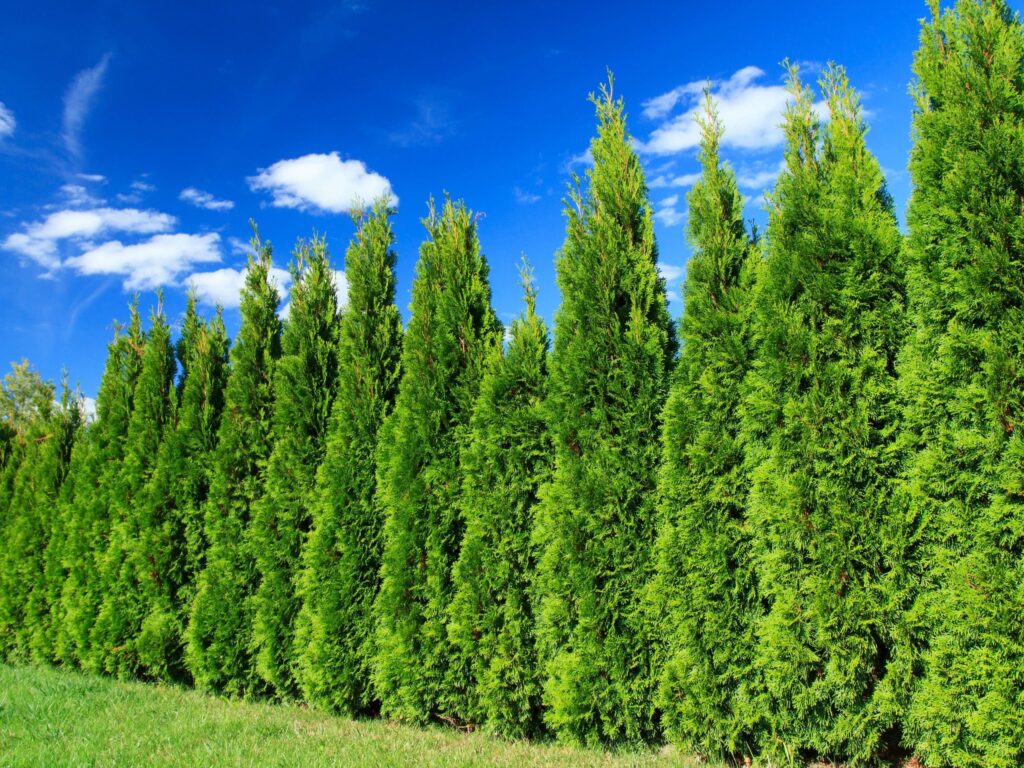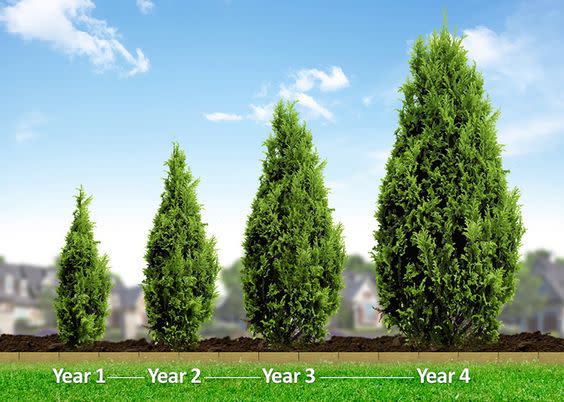Cypress Tree Grow and Care
The cypress tree (genus Cupressus) is a type of evergreen conifer that is known for its durability, distinctive appearance, and use in a variety of landscapes.
Key Features of Cypress Trees:
- Cypress trees are known for their durability, resistance to rot, and Sweet wood.
- They often thrive in wet conditions or near bodies of water.
- They vary in appearance from tall, narrow trees to more rounded or spreading forms.

Understanding Cypress Tree: Types, Appearance, Growth, and Lifespan
The Cypress trees are the most ancient and are able to recover very soon in the world. They belong to the Cupressaceae Tree family and are found in temperate and subtropical regions across the globe. With a variety of different climates, cypress trees are known for their longevity, adaptability, and importance in the environment.
Types of Cypress Trees
- Bald Cypress (Taxodium distichum)
- Monterey Cypress (Cupressus macrocarpa)
- Leyland Cypress (Cupressocyparis leylandii)
- Italian Cypress (Cupressus sempervirens
- Swamp Cypress (Taxodium distichum var. imbricarium)
- Alaska Yellow Cedar (Cupressus nootkatensis)
- Eastern Red Cedar (Juniperus virginiana)


1.Bald Cypress Tree (Taxodium distichum)
- Habitat: It can found in wetlands, swamps, and floodplains in the southeastern United States, Mostly found along rivers and in areas with a lot of water.
- Characteristics: This deciduous conifer sheds its feathery, bright green needles in fall when they turn orange-brown and fall. It produces an unusual root structure called a “knee” above the ground or water to enhance stability or gas exchange. Mature trees can be up to 70-100 feet tall with straight trunks and flared bases.
- Uses: Valued for its rot-resistant wood, it is used in construction, particularly for outdoor applications. Popular as an ornamental tree in wetland restoration and landscaping.
Life Span and Care Bald Cypress Tree
The Bald Cypress Tree Taxodium distichum, one of the longest living species, has been around for hundreds of years with known specimens going over 600 years old. If living conditions are optimal in swampy conditions, they survive and thrive over centuries of development.
Care
- Fertilization: Apply a balanced, slow-release fertilizer in early spring if soil lacks nutrients.
- Soil Requirements: Prefers moist, acidic soils but is highly adaptable to various soil types, including clay, loam, and sandy soils.
- Watering: Thrives in wet environments but can tolerate moderate drought once established. Regular watering is recommended for young trees, especially in dry conditions.
- Sunlight: Requires full sun for optimal growth (at least 6–8 hours of direct sunlight daily).
- Pruning: Minimal pruning needed. Remove dead or damaged branches during dormancy to maintain a healthy structure.
- Pests/Disease: Generally resistant to most pests and diseases but may occasionally be affected by fungal issues or bagworms.
- Hardiness Zones: Best suited for USDA Zones 4–9, tolerating a wide range of climates.


2. Monterey Cypress Tree (Cupressus macrocarpa)
Uses: Famous as a windbreak, ornamental tree, and bonsai specimen. Its dramatic shape and tolerance to coastal winds make it iconic in landscaping.
Habitat: Found in the coastal cliffs of Central California, particularly in Monterey and Carmel. It thrives in coastal environments with cool, foggy conditions and salty air.
Characteristics: An evergreen conifer with a gnarled and picturesque appearance, particularly in exposed coastal areas. Its dense, bright green to dark green foliage grows in scale-like leaves, and it produces small, round cones. Mature trees can grow up to 40–70 feet tall in cultivation and higher in native environments. It develops a wide, irregular crown in open spaces.
Life Span and Care Monterey Cypress Tree
The Monterey Cypress Tree can live for over 200 years in the area where they born. However, cultivated trees have shorter lifespans, typically 50–150 years, depending on environmental conditions and care.
Care
- Fertilization: Apply a balanced, slow-release fertilizer in spring to promote healthy growth, especially in poor soils.
- Soil Requirements: Prefers well-drained soils, including sandy or rocky types, but adapts to various soil conditions as long as there’s good drainage.
- Watering: Requires moderate watering when young. Once established, it is drought-tolerant but benefits from occasional deep watering during extended dry periods.
- Sunlight: Grows best in full sun, requiring at least 6–8 hours of sunlight daily.
- Pruning: Minimal pruning needed unless shaping or removing damaged branches. Perform pruning during the dormant season.
- Pests/Disease: Susceptible to cypress canker (a fungal disease) and aphids. Regular inspection and maintaining tree health can reduce risks.
- Hardiness Zones: Ideal for USDA Zones 7–10, preferring mild coastal climates.


3.Leyland Cypress Tree (Cupressocyparis leylandii)
- Habitat: It is a hybrid tree, the Leyland Cypress tree not found naturally in the wild, but is widely cultivated worldwide. It thrives in temperate regions and adapts well to various soil types and climates.
- Characteristics: An evergreen conifer known for its fast growth, soft-textured, and hard structure. It has a pyramidal shape in youth and matures into a more columnar form. The foliage is dark green with flattened sprays of scale-like leaves. Leyland Cypress can grow up to 50–70 feet tall and 15–25 feet wide within 15–20 years.
- Uses: Commonly used as privacy screens, windbreaks, hedges, and in large landscapes. Its dense foliage makes it a popular choice for creating natural barriers.
Life Span and Care Leyland Cypress Tree
The Leyland Cypress Tree has a short lifespan compared to other conifers, mostly living for 20–50 years, depending on environmental conditions and care. Overcrowding, poor soil, or pests can reduce its life expectancy.
Care
- Fertilization: Apply a balanced, slow-release fertilizer in early spring to promote healthy growth. Avoid over-fertilizing, as it may lead to weak branches.
- Soil Requirements: Grows well in a variety of soils, including clay, sandy, and loamy, as long as they are well-drained.
- Watering: Requires regular watering when young, especially during dry spells. Once established, it is moderately drought-tolerant but benefits from occasional deep watering.
- Sunlight: Prefers full sun to partial shade, with at least 6 hours of direct sunlight daily for optimal growth.
- Pruning: Requires regular pruning to maintain shape, especially when used as a hedge. Avoid cutting into old wood, as it does not regenerate foliage.
- Pests/Disease: Susceptible to cypress canker (fungal disease) and bagworms. Ensure good air circulation and monitor for pests regularly.
- Hardiness Zones: Suitable for USDA Zones 6–10.

If you have any query or complaint, please feel free to contact us. We will assist you with any concerns, feedback, or questions you may have. We value your feedback and aim to resolve any issues. Don’t hesitate to reach out—we are committed to providing excellent service and ensuring your satisfaction.” Email: [email protected]
We Have multiple information Source some of them listed below:
